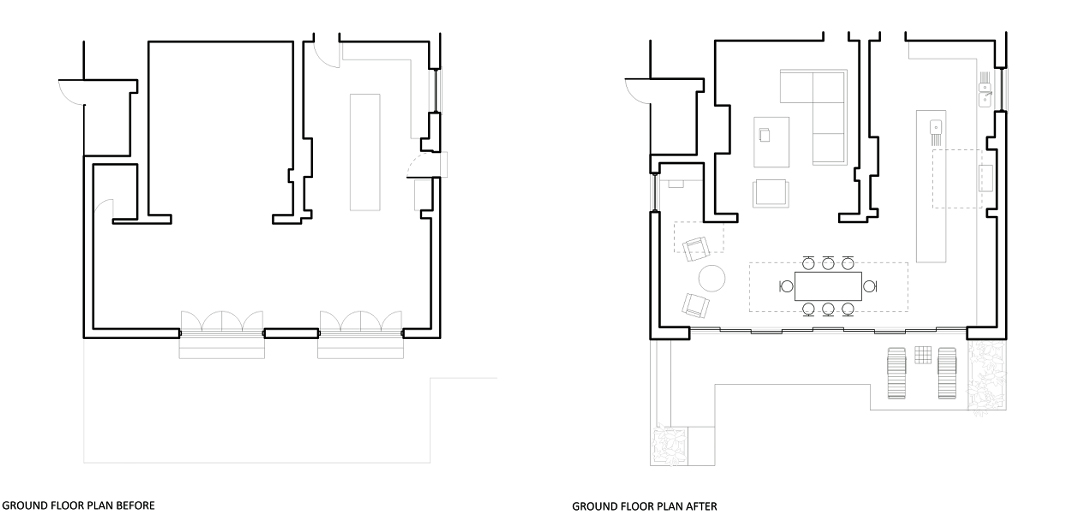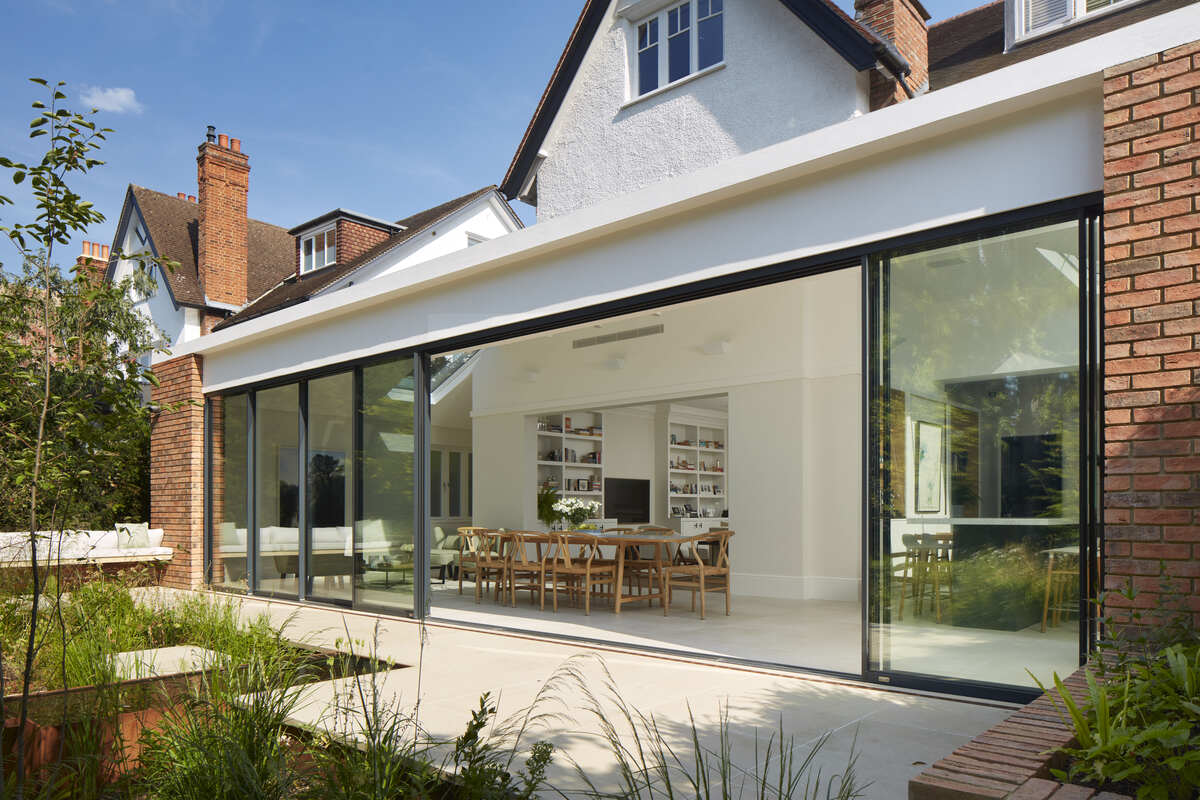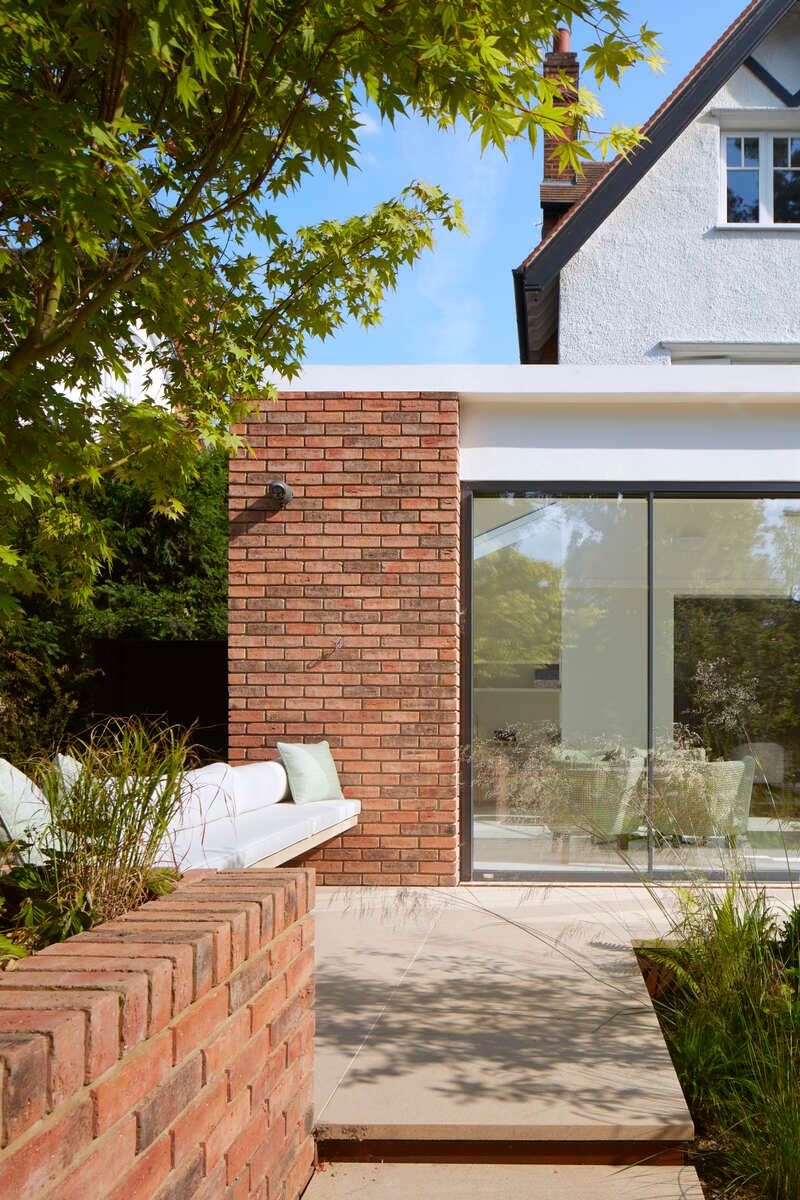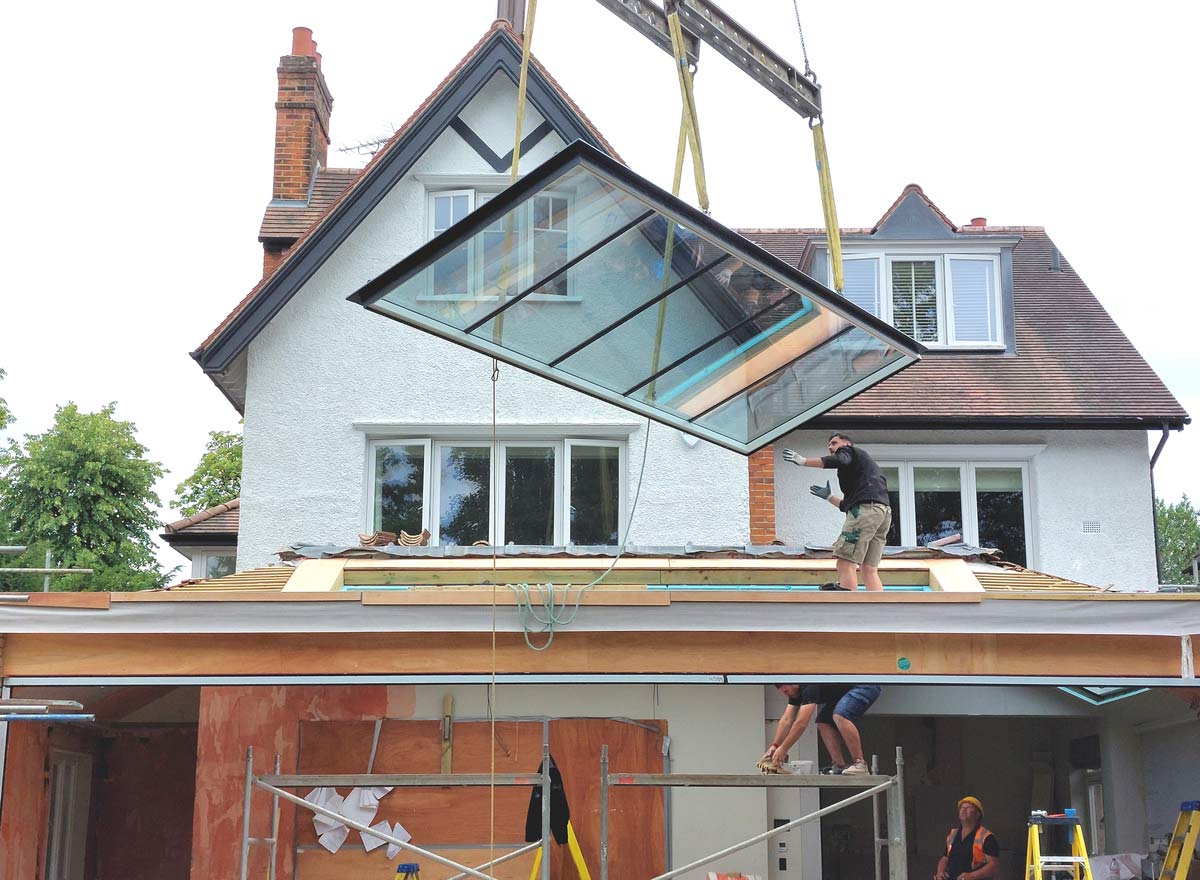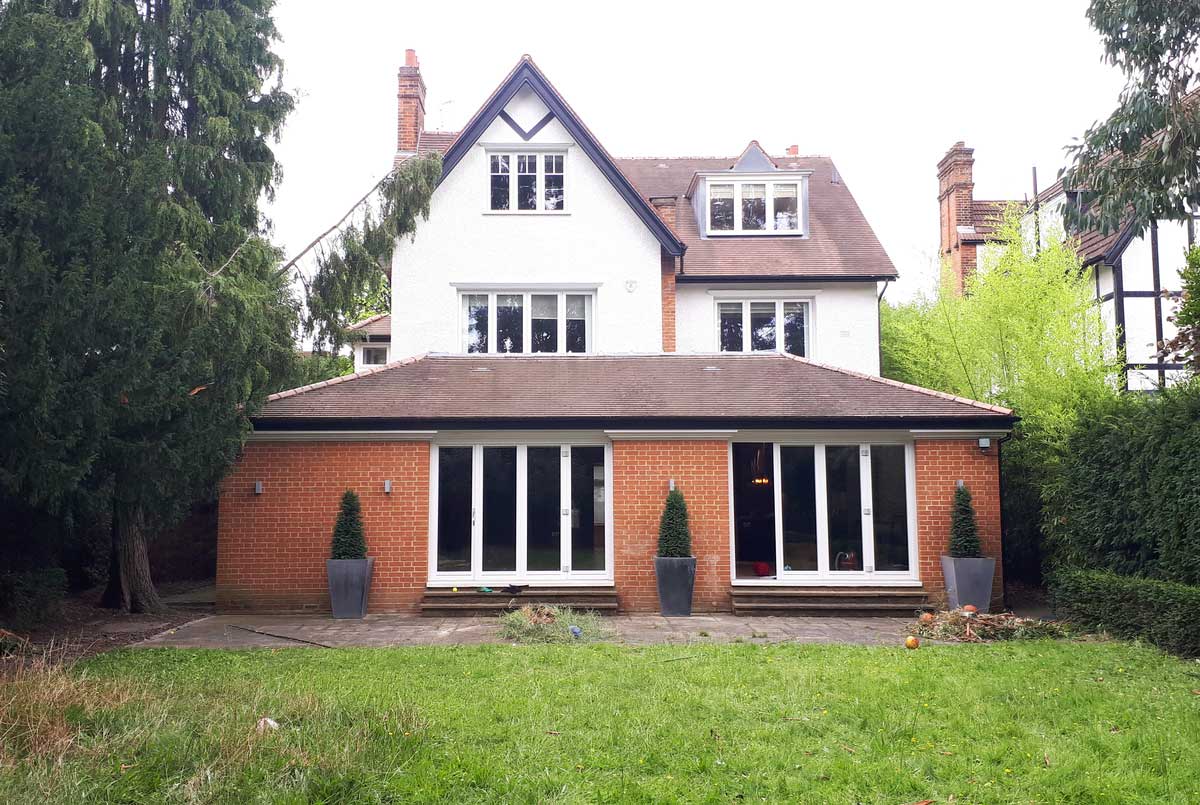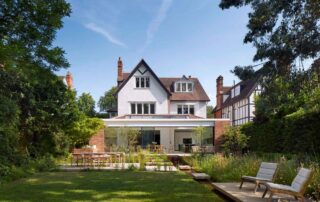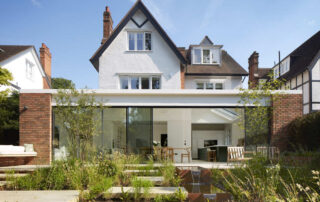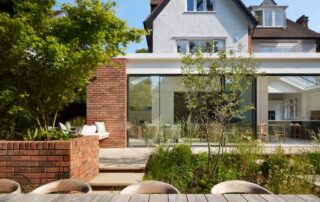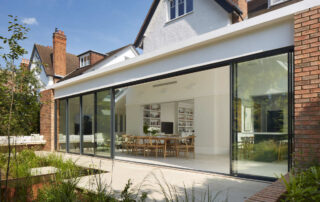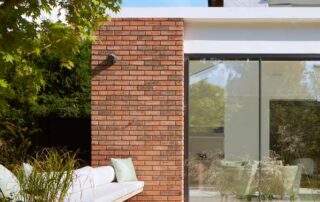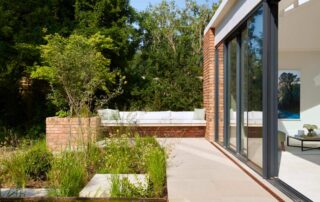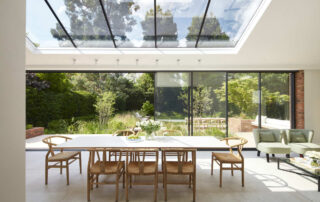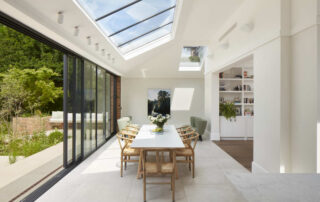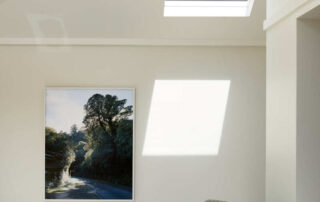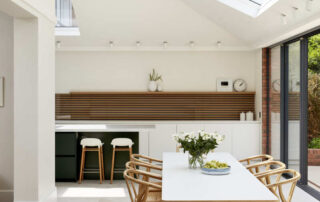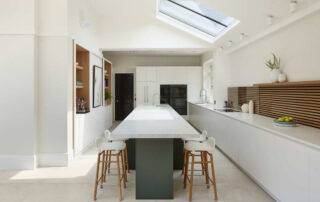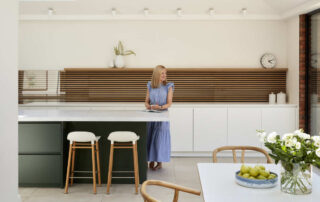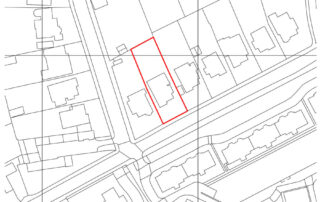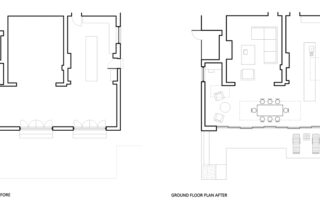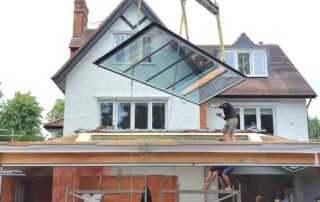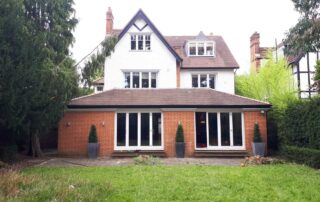Our previous clients Katherine & James (see also Slot_House) contacted us at the height of the pandemic in 2020 when they were thinking of buying a larger house in a leafy south-London suburb which could offer them more space and a generous rear garden.
The only problem was that the garden was north facing and, as light-loving New Zealanders, they were worried that the house would be too dark.
We were able to reassure them that with the right design we could ensure lots of natural light to the interior whilst improving the visual connection between house and garden.
Budget dictated a facelift of the existing structure rather than a rebuild so the design is a sort stage-set behind which a lot of the original building still sits.
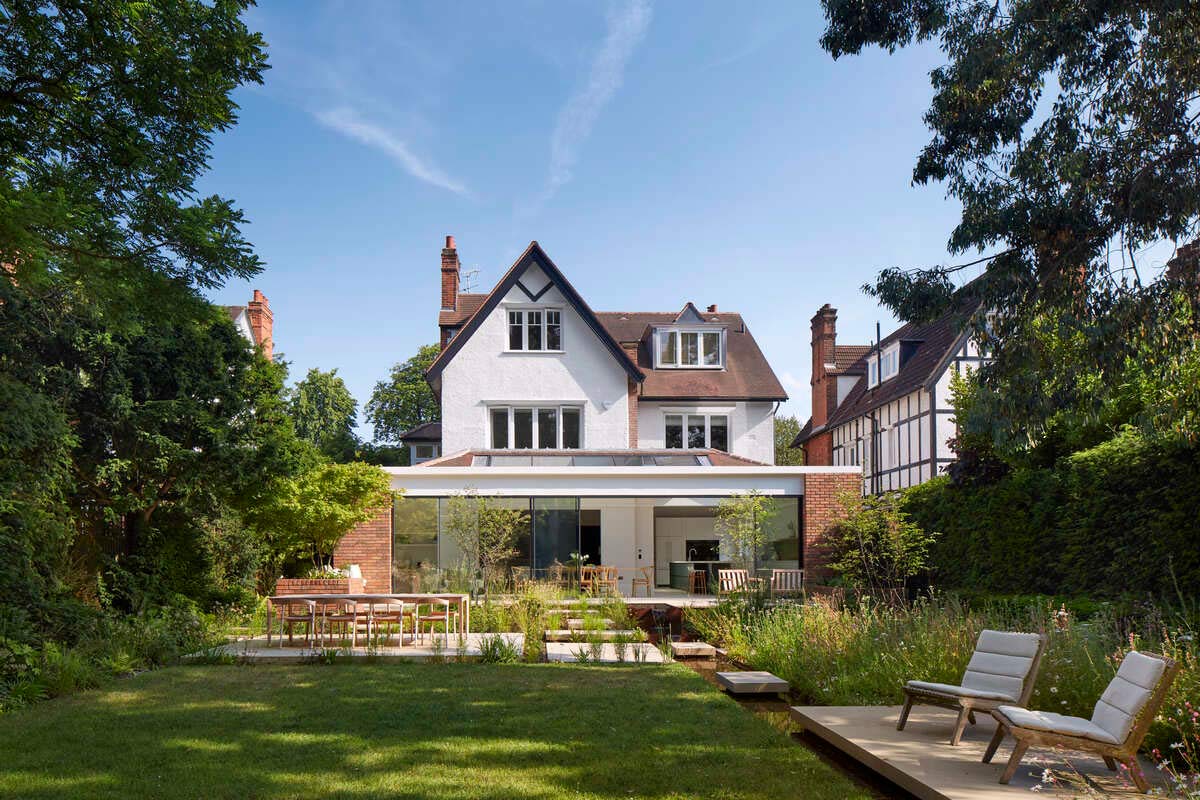
Photo: Matt Clayton Photography.
Questions and Answers
Who are the clients and what’s interesting about them?
Katherine and James and their two kids are originally from New Zealand but have lived in London, UK for many years. Like many Kiwis abroad, to feel good where they live, they want space, light and a strong connection with the nature. During the pandemic they seized an opportunity to buy a larger house which ticked all of these boxes, but there was one problem. The garden faced North.
In conversation with the architects (who had re-modelled their previous property) they decided that the right design could help maximise sunlight, daylight and views out to the garden.
Despite the purchase and early design stages taking place at the height of the Covid pandemic, Katherine and James were able to buy the house and commission the architects!
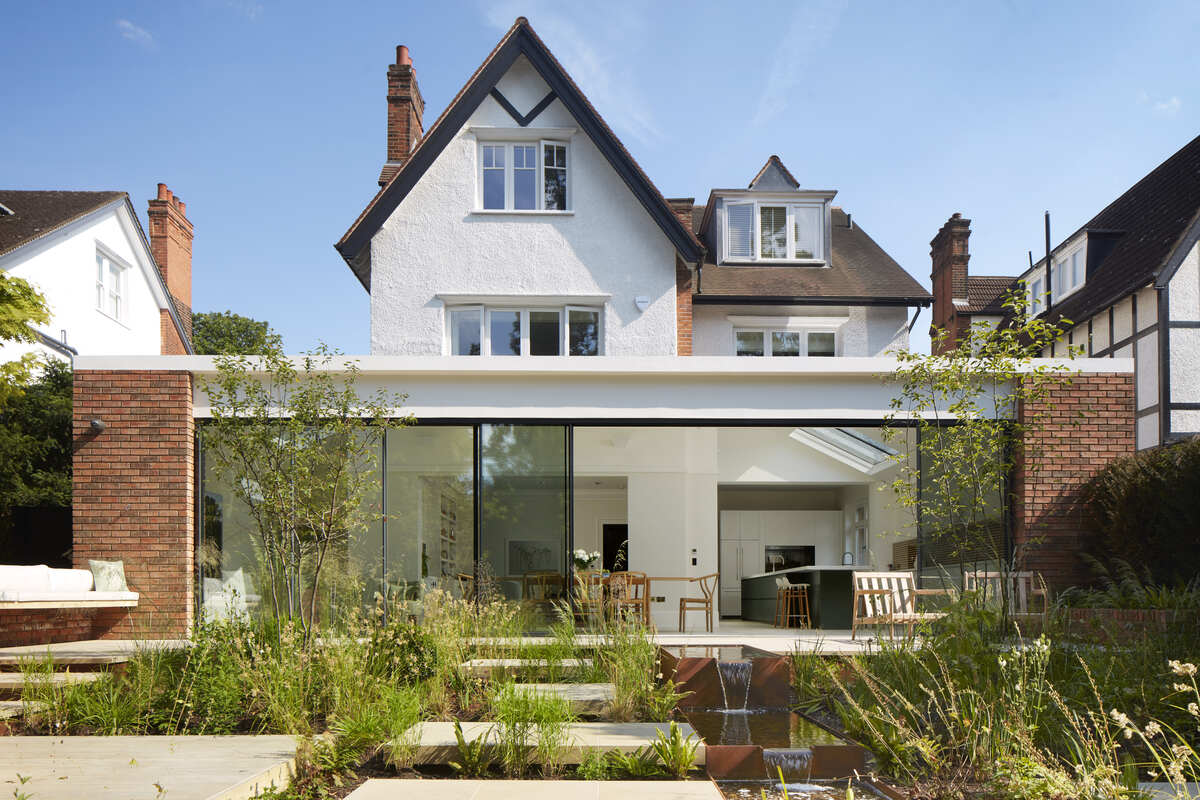
Photo: Matt Clayton Photography.
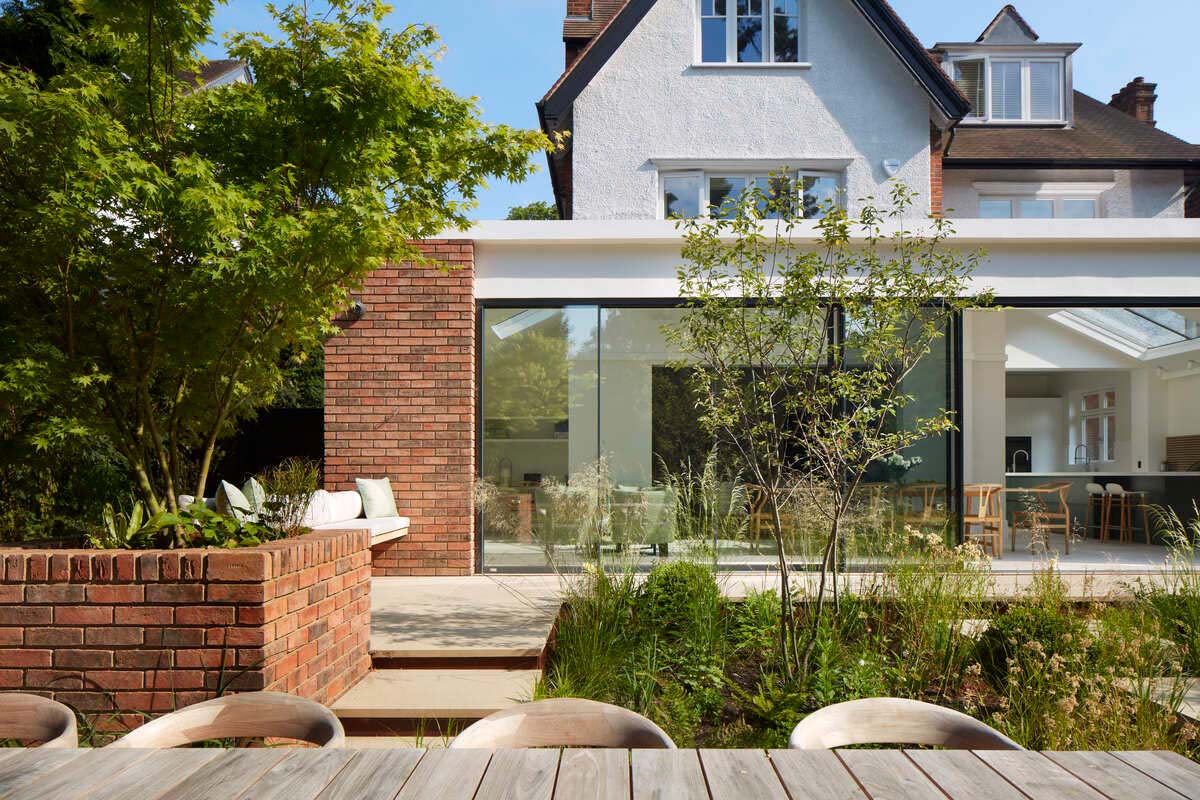
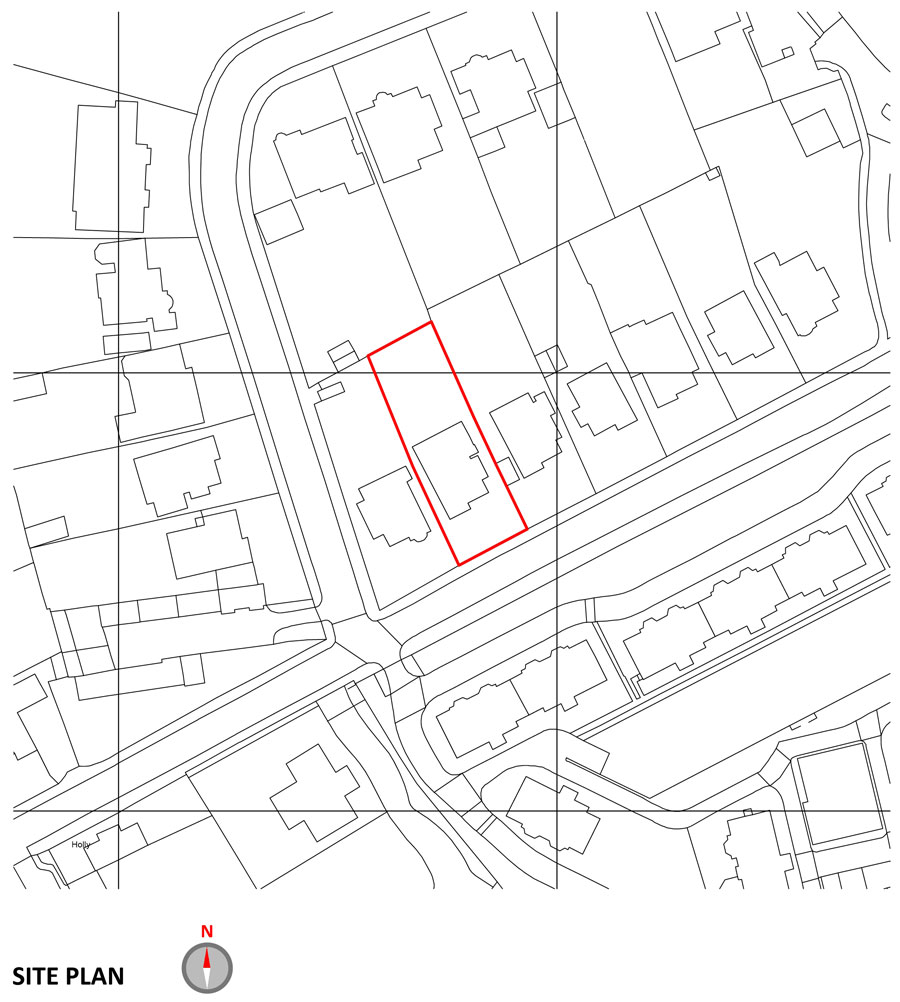
Was the project affected by the pandemic?
The house purchase and the early design work all took place in 2021, at the heart of the Covid 19 pandemic. Nevertheless, with proper precautions (and the obligatory Zoom calls!) both were completed without any significant problems or delay.
Whilst the building work took place in the aftermath, the additional pressure of the Ukraine war meant that higher material costs and shortages of goods definitely hit the build – perhaps adding 20% to certain materials.
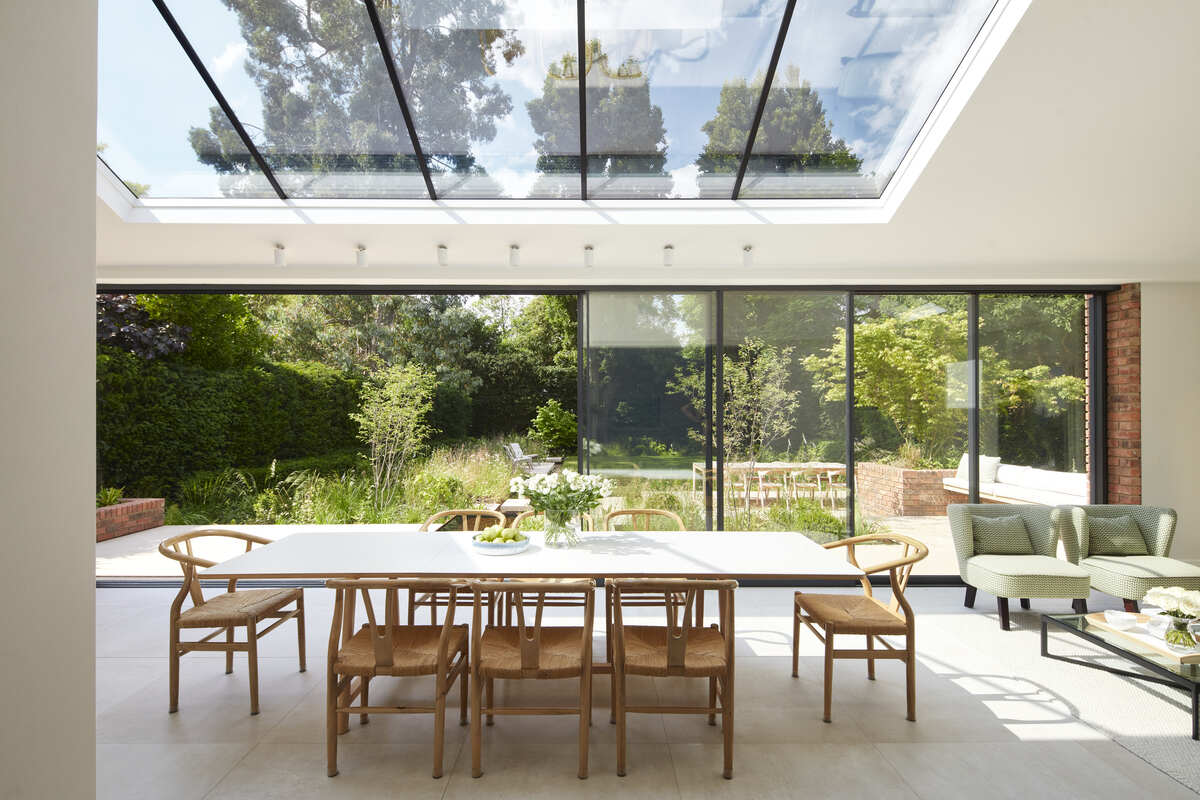
Photo: Matt Clayton Photography.
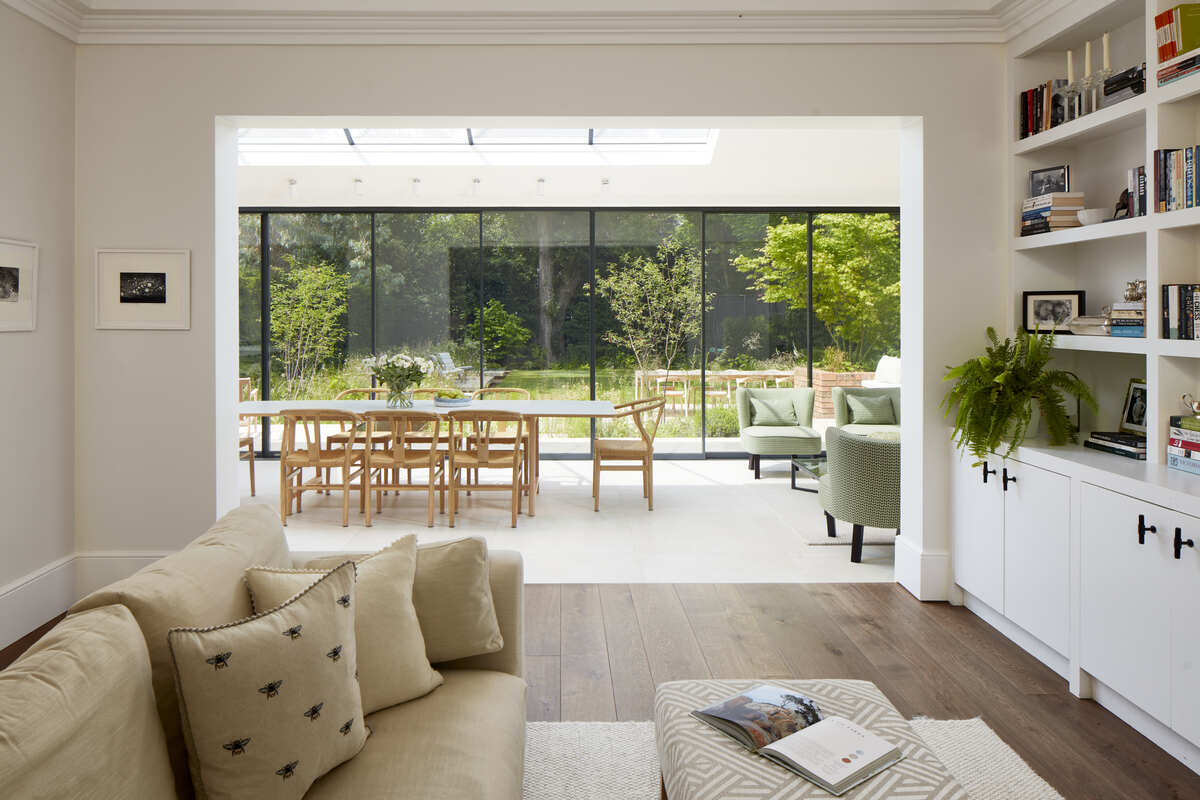
Technical Challenge 1:
The clients needed natural light. A lot of natural light. The best way to get this was with large skylights and these were heavy. Specialist lifting equipment was therefore required to haul each one over the top of the house before being carefully lowered into position.
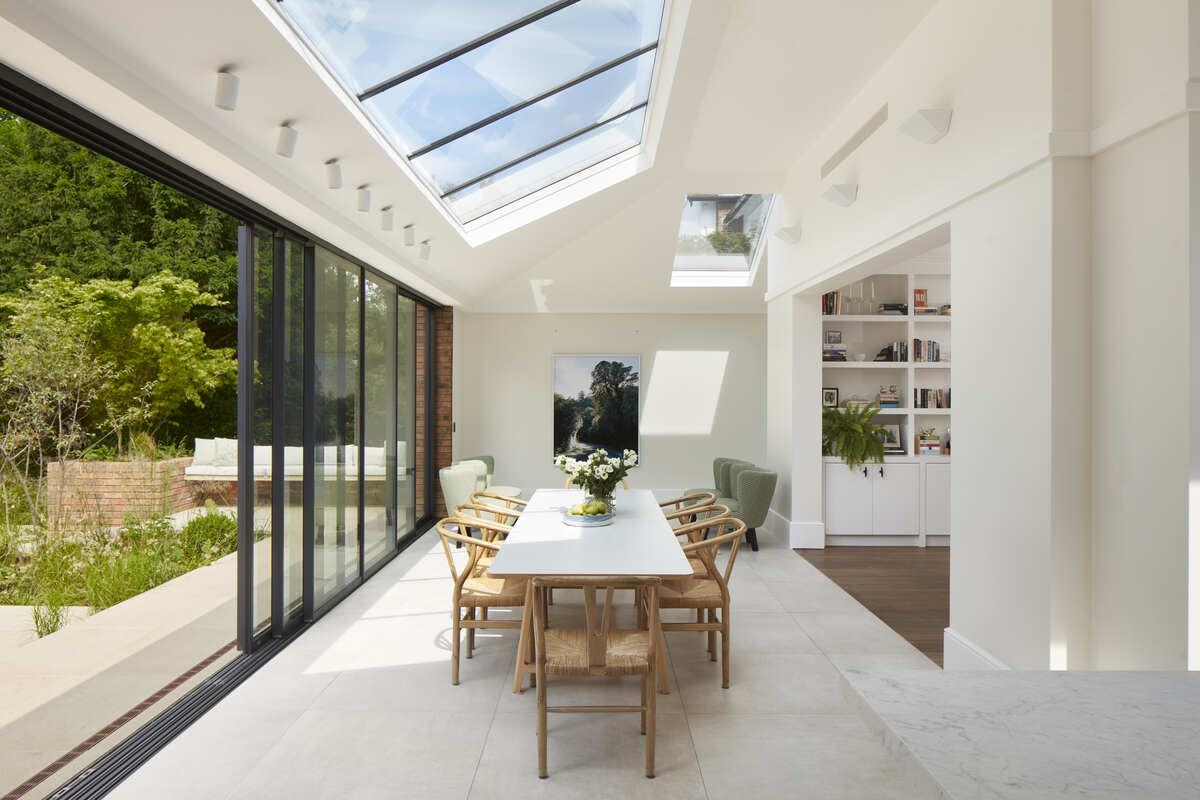
Photo: Matt Clayton Photography.
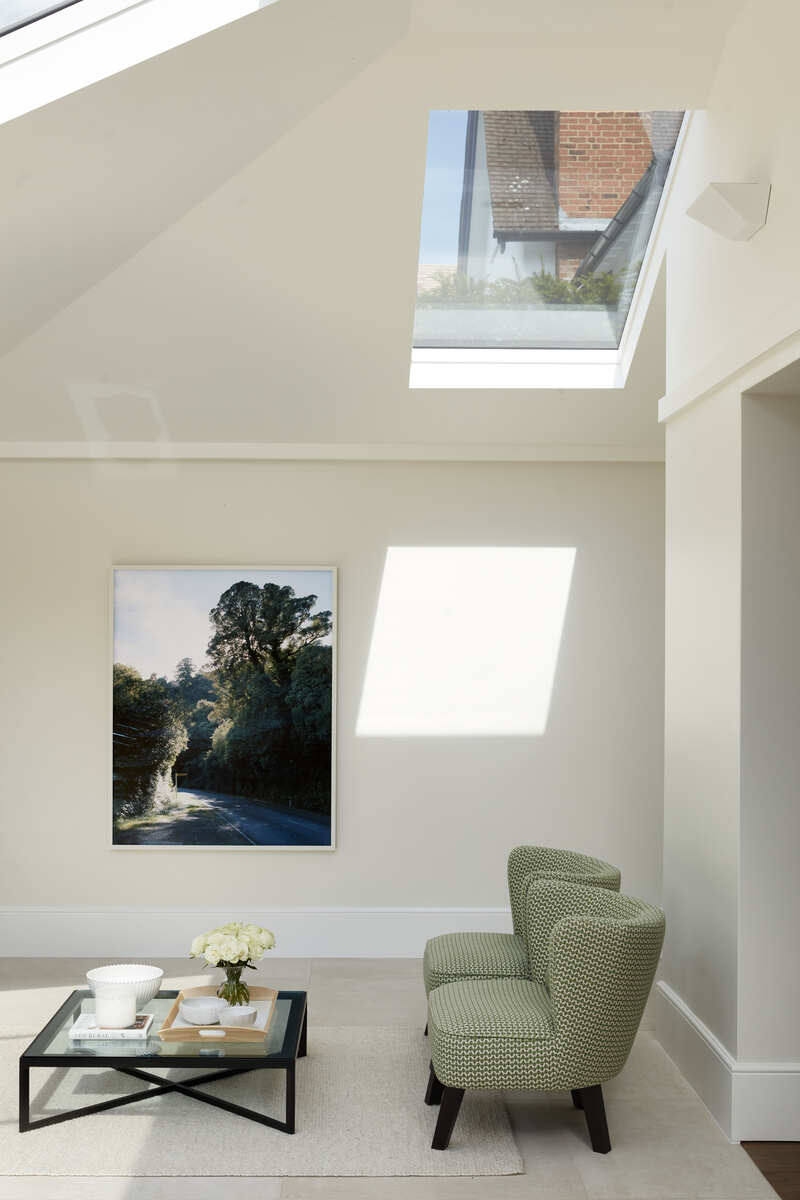
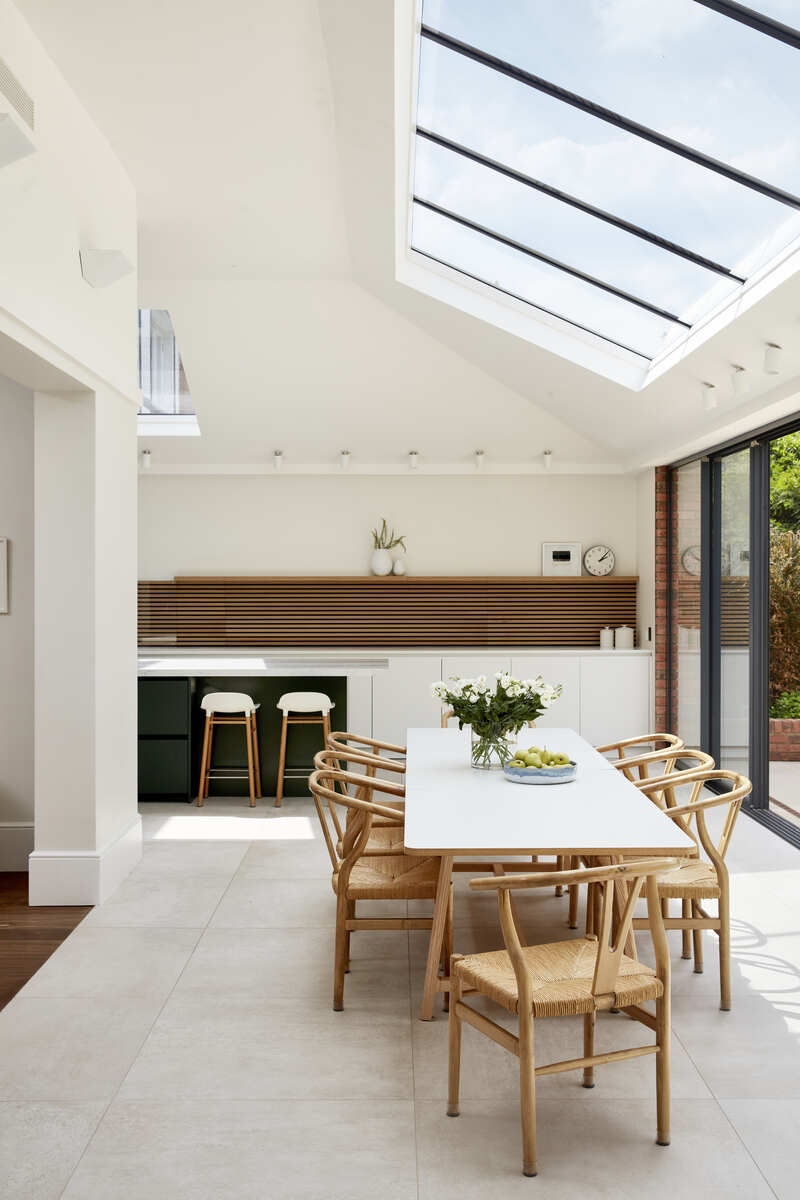
Technical Challenge 2:
The house had previously been refurbished to a high specification and some key elements needed to be retained. These included underfloor heating, air conditioning and digital lighting systems.
The builders had to carefully work around these elements and integrate them with the new spaces.
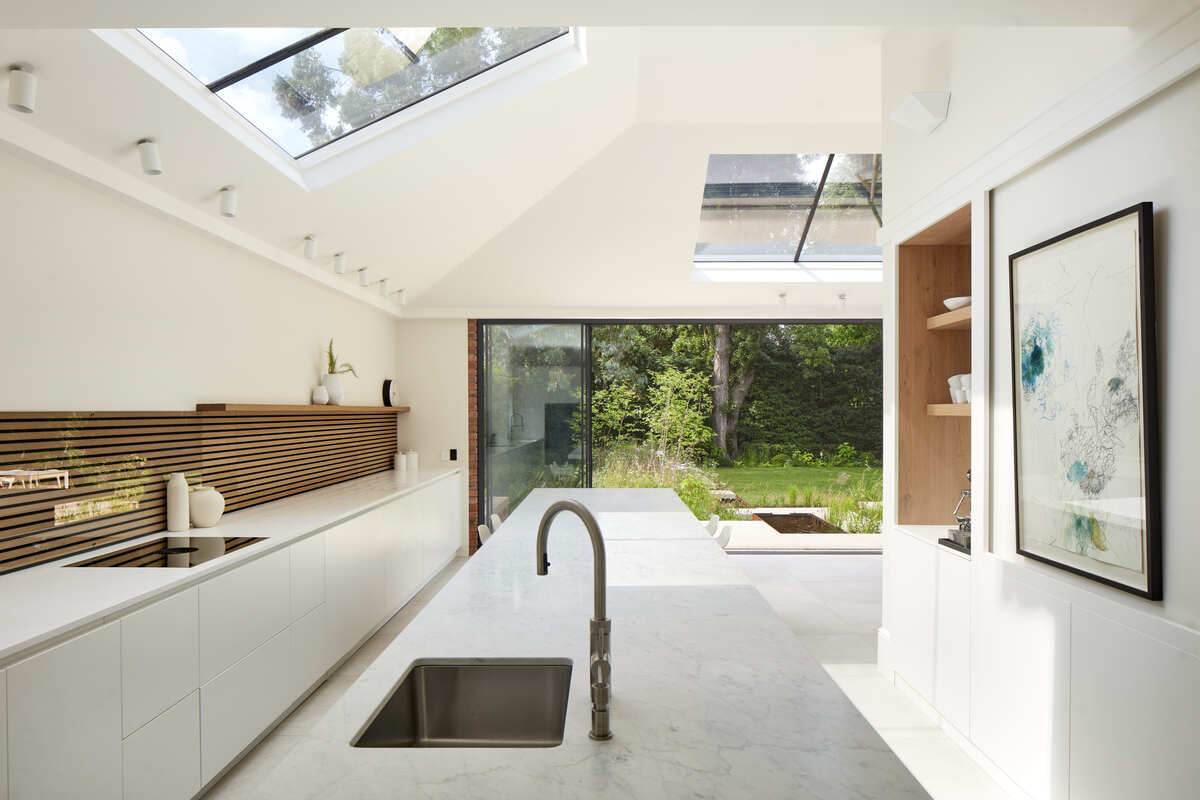
Photo: Matt Clayton Photography.
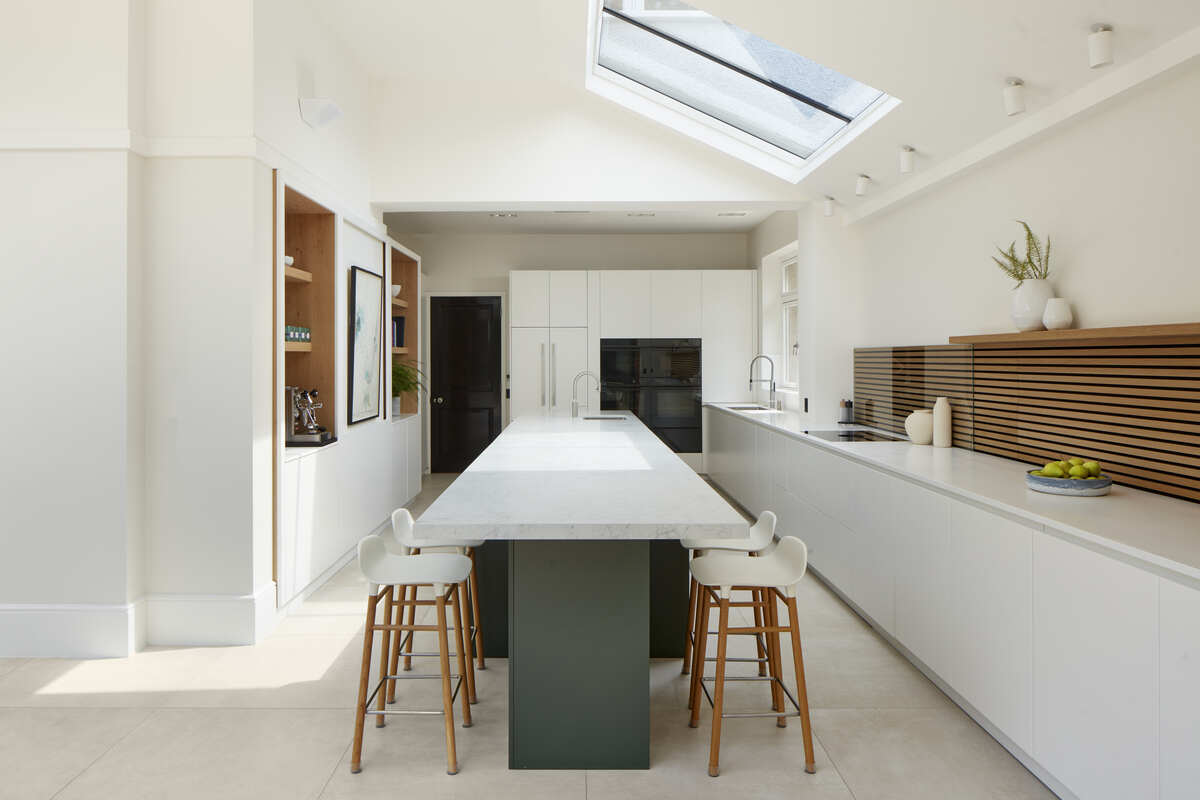
Details for the Archi-nerds:
Recessed pointing (visible on the external brickwork) was a popular choice for UK architects of the 60s and 70s. It’s easy to do and can look more contemporary than other techniques. See it in the images of the project from the back garden!
The brick type was chosen to complement the original red brick details of the existing building.
The brick columns are not structural but are supposed to give the impression of a solid support for the long beam above the sliding doors.
The multiple divisions of the sliding glass doors make them easier to operate and create a rhythm across the opening.
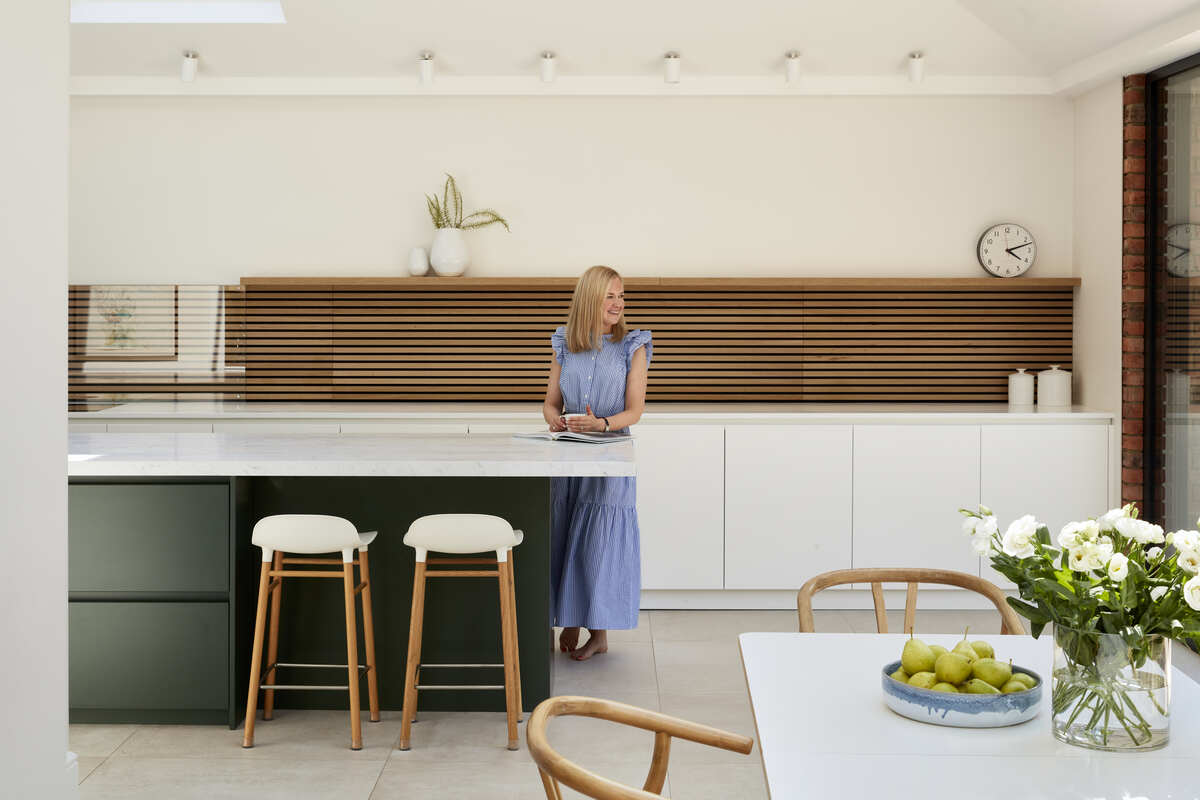
Photo: Matt Clayton Photography.

